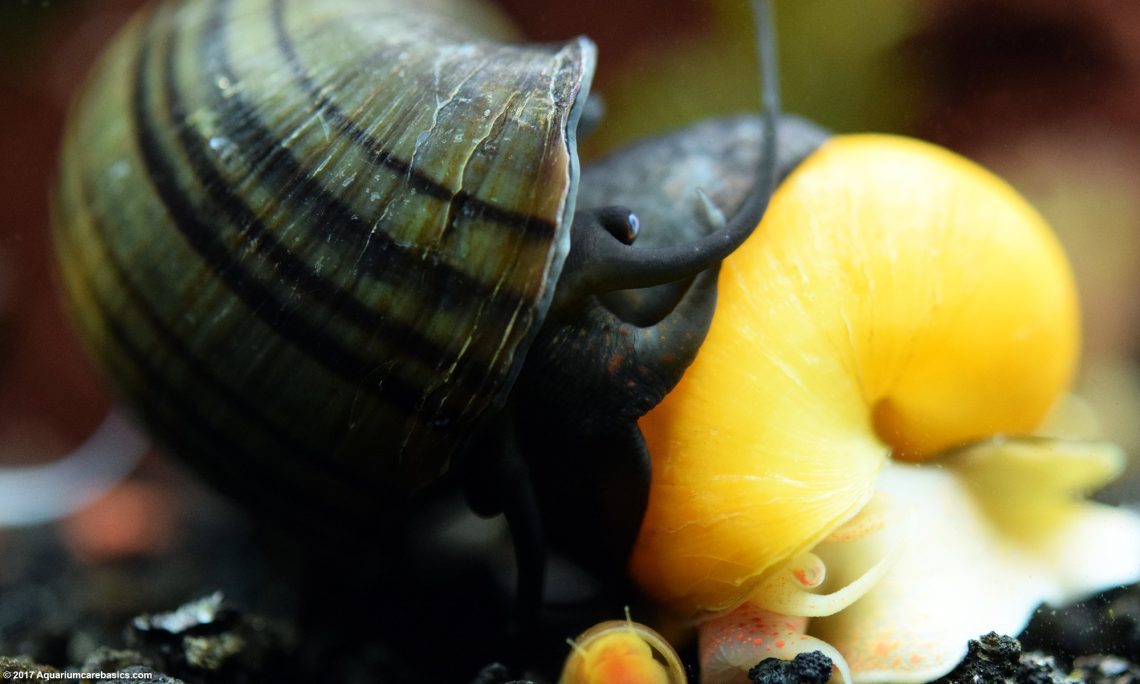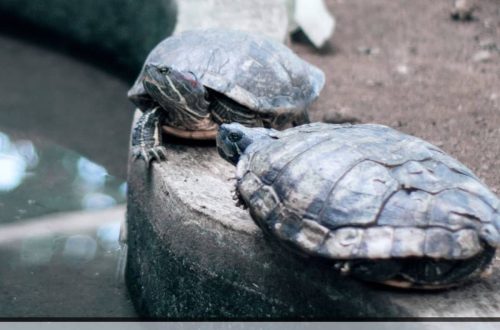
Aquarium snails: the most common species, maintenance and nutrition
Snails are gastropod molluscs that have an outer shell. Distributed everywhere, especially on the coasts of the seas in the tropics and subtropics.
In the design of the aquarium, they are familiar and look very beautiful. You need to buy any kind of snails only at a pet store, in no case should they be placed in water directly from their natural environment, because mollusks can infect an infection that will kill fish and algae.
Gastropods are:
- maritime,
- land,
- freshwater.
The benefits of aquarium snails are much greater than the harm. Although they do not live very long, sometimes they muddy the waters, some species can eat leftover food for fish, rotting parts of algae and fish waste products, purifying water and glass, filtering toxins.
Of the most frequently occurring problems: violent uncontrolled reproduction that threatens the fish; mollusks eat aquarium plants to the ground and fish eggs, some secrete unpleasant mucus. If you have such troubles, some of the snails will have to be caught and destroyed.
The varieties of snails are numerous. Treat their choice of species responsibly, and they will become a real decoration of your aquarium.
The most popular types of aquarium snails
- ampoule. A very beautiful aquarium snail, yellow, dark brown or, more rarely, striped, quite large – up to 8 cm in diameter. It can quickly move along the walls of the aquarium, it is interesting to watch it, especially when it releases its long whiskers. Ampularia native to South America, prefers silty ponds and rivers. The eggs are laid on dry land. They like to eat small vegetation, so you should not buy them for an aquarium in which there are a lot of plants. Ampoules themselves do not require special care. Caviar laid on the surface of the water needs special humidity. Ampoules do not create problems for fish, they feed on fish food and dead parts of plants. The offspring can be bred by keeping 3-4 snails in the aquarium.
- physics. Native to North Africa, the species is also distributed in Asia. Small in size, the color of the shell is usually brown, sometimes with shades of pink. For a full existence, they need water with a temperature of at least 20 degrees. Snails move with the help of threads that are attached to the surface. Nutrition for physical are fish food and waste products of fish. They perfectly purify water and glasses from microscopic algae. Transparent eggs are laid on the surface of plants. Snails of this species reproduce quickly and are difficult to remove from the aquarium.
- Coils. A type of freshwater mollusk, widely distributed in natural conditions. Snails living in an aquarium are usually small, red or brown in color. They do not bring much benefit, but in themselves serve as elements of decor. Of the advantages – it can exist in aquariums with different temperature ranges, you do not need to take extra care of food for coils – they feed on rotten plants, a bacterial film on the surface of the water, and fish food. The reels themselves are edible for many aquarium fish. Since shellfish can carry various diseases that are dangerous for fish, they should not be taken directly from water bodies.
- tiger snail. Mollusk from South Africa, has a beautiful striped coloring of the shell, the color is light brown. The species breeds well in hard water. It can escape from the aquarium, so it needs to be covered. Unlike many other aquarium snails, it only eats lower algae without touching the plants.
- Helena. A predatory mollusk of bright yellow color with brown stripes. It has a special proboscis with “teeth”, which drills the shells of smaller snails. It can be put into the aquarium if you need to cope with the violent reproduction of other mollusks. Fish and larger snails than herself, Helena does not touch. This type of snail needs sand at the bottom so that it can hide in it, as well as hard water, otherwise the shell is destroyed. Helena can also eat frozen seafood.
- black mystery. A peaceful aquarium snail that does not interfere with other inhabitants. She needs air, she breathes with the help of a special process, while she herself is immersed in water. Therefore, the lid of the aquarium should not be tightly covered. Absolutely not whimsical to temperature, lives in water with different pH. A native species from Brazil, usually the mollusk is passive all day, and in the evening it begins to look for food. She feeds on fish food (from flakes to live food), rotting algae, and she likes vegetables. The female lays eggs at night. The offspring appears in 2-3 weeks, depending on the water temperature. Young animals can be fed the same as adults, but in a more crushed form.
Nutrition and features of choice
Before you buy living creatures in the aquarium, think about what exactly you want to focus on: fish or snails. This will determine what soil, plants, water hardness and acidity are needed.
If the main thing in your aquarium is fish, and there are few mollusks, then you don’t need to feed them separately, they will eat up the food for the fish themselves, they will find dying algae or plants.
If you focus on snails, give them fresh food – fruits (for example, melons, watermelons, apples) and grated vegetables (carrots, cucumbers, etc.), greens (spinach, lettuce). Scraped meat will be a delicacy. Vegetables and fruits that have not been eaten within a couple of days should be removed so that the water does not become cloudy.
Conclusion
Different types of snails are simply necessary in any aquarium, they act as orderlies, please the eye and rarely cause problems. If they do appear, it means that something is going wrong in the aquarium. This is a signal to the owner: it’s time to clean up.





